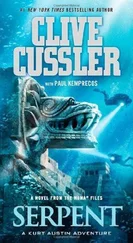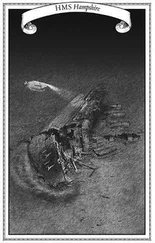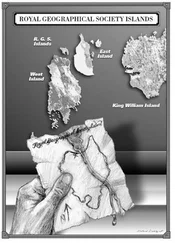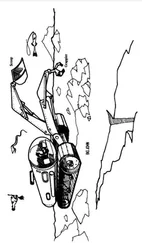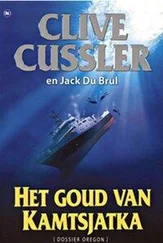Dr. Shannon Kelsey: A respected archaeologist, a woman of fierce independence and beauty, her passion for the great ancient mysteries has brought her to the mountains of Peru, where she stands on the threshold of an astounding discovery-- and on the verge of death. . .
Joseph Zolar: Within a labyrinth of legitimate business enterprises, he has created a vast international empire built on illegal trade in antiquities. Now he has set his sights on the ultimate prize-golden antiquities worth almost a billion dollars-- and from his lavish headquarters he coolly signs the death warrant of anyone who dares to challenge him. . .
Cyrus Sarason: Zolar's brother and partner, he takes a more personal, up-close approach to the family business. And when fortunes are at stake, he prefers to get his hands dirty-- often putting them to lethal use. . .
Tupac Amaru: Feared as a revolutionary but driven by greed, he has cut a swath of destruction throughout the hill country of the Amazonas, his cruel black eyes as empty as his heart-- but after a savage encounter with DIRK PITT, Amaru dreams only of vengeance. . .
David Gaskill: An agent for U.S. Customs, he specializes in tracking down smugglers of art and artifacts. Living only for hot jazz and a hot case, he loves the game and the intrigue-- and now has the opportunity of a lifetime-- a chance to penetrate and smash a powerful crime family. . .
Congresswoman Loren Smith: Stylish and seductive, with knockout violet eyes, she has happily succumbed to the mesmerizing charm of DIRK PITT. But she becomes hostage to Zolar's greedy scheme-- a pawn in a brutal game that threatens to turn deadly. . .
THE MYSTERIOUS INTRUDERS
A.D. 1533
A Forgotten Sea
They came from the south with the morning sun, shimmering like ghosts in a desert mirage as they slipped across the sun-sparkled water. The rectangular cotton sails on the flotilla of rafts sagged lifelessly under a placid azure sky. No commands were spoken as the crews dipped and pulled their paddles in eerie silence. Overhead, a hawk swooped and soared as if guiding the steersmen toward a barren island that rose from the center of the inland sea.
The rafts were constructed of reed bundles bound and turned up at both ends. Six of these bundles made up one hull, which was keeled and beamed with bamboo. The raised prow and stern were shaped like serpents with dog heads, their jaws tilted toward the sky as if baying at the moon.
The lord in command of the fleet sat on a thronelike chair perched on the pointed bow of the lead raft. He wore a cotton tunic adorned with turquoise platelets and a wool mantle of multicolored embroidery. His head was covered with a plumed helmet and a face mask of gold. Ear ornaments, a massive necklace, and arm bracelets also gleamed yellow under the sun. Even his shoes were fashioned from gold. What made the sight even more astonishing was that the crew members were adorned no less magnificently.
Along the shoreline of the fertile land surrounding the sea, the local native society watched in fear and wonder as the foreign fleet intruded into their waters. There were no attempts at defending their territory against invaders. They were simple hunters and foragers who trapped rabbits, caught fish, and harvested a few seeded plants and nuts. Theirs was an archaic culture, curiously unlike their neighbors to the east and south who built widespread empires. They lived and died without ever constructing massive temples to a race of gods and now watched in fascination at the display of wealth and power that moved across the water. As one mind they saw the fleet as a miraculous appearance of warrior gods from the spirit world.
The mysterious strangers took no notice of the people crowding the shore and continued paddling toward their destination. They were on a sanctified mission and ignored all distractions. They propelled their craft impassively, not one head turned to acknowledge their stunned audience.
They headed straight for the steep, rock-blanketed slopes of a small mountain making up an island that rose 200 meters (656 feet) from the surface of the sea. It was uninhabited and mostly barren of plant life. To the local people who lived on the mainland it was known as the dead giant because the crest of the long, low mountain resembled the body of a woman lying in wakeless sleep. The sun added to the illusion by giving it a glow of unearthly radiance.
Soon the lustrously attired crewmen grounded their rafts on a small pebble-strewn beach that opened into a narrow canyon. They lowered their sails, woven with huge figures of supernatural animals, symbols that added to the hushed fear and reverence of the native onlookers, and began unloading large reed baskets and ceramic jars onto the beach.
Throughout the long day, the cargo was stacked in an immense but orderly pile. In the evening, as the sun fell to the west, all view of the island from the shore was cut off. Only the faint flicker of lights could be seen through the darkness. But in the dawn of the new day, the fleet was still snug on shore and the great mound of cargo was unmoved.
On top of the island mountain much labor was being expended by stone workers assaulting a huge rock. Over the next six days and nights, using bronze bars and chisels, they laboriously pecked and hammered the stone until it slowly took on the shape of a fierce, winged jaguar with the head of a serpent. When the final cutting and grinding were finished, the grotesque beast appeared to leap from the great rock it was carved upon. During the sculpting process the cargo of baskets and jars was slowly removed until there was no longer any trace.
Then one morning the inhabitants looked across the water at the island and found it empty of life. The enigmatic people from the south, along with their fleet of rafts, had disappeared, having sailed away under cover of darkness. Only the imposing stone jaguar/serpent, its teeth curved in a bed of bared fangs and with slitted eyes surveying the vast terrain of endless hills beyond the small sea, remained to mark their passage.
Curiosity quickly outweighed fear. The next afternoon, four men from the main village along the coast of the inland sea, their courage boosted by a potent native brew, pushed off in a dugout canoe and paddled across the water to the island to investigate. After landing on the little beach, they were observed entering the narrow canyon leading inside the mountain. All day and into the next their friends and relatives anxiously awaited their return. But the men were never seen again. Even their canoe vanished.
The primitive fear of the local people increased when a great storm suddenly swept the small sea and turned it into a raging tempest. The sun blinked out as the sky went blacker than anyone could ever remember. The frightening darkness was accompanied by a terrible wind that shrieked and churned the sea to froth and devastated the coastal villages. It was as though a war of the heavens had erupted. The violence lashed the shoreline with unbelievable fury. The natives were certain the gods of the sky and darkness were led by the jaguar/serpent to punish them for their intrusion. They whispered of a curse against those who dared trespass on the island.
Then as abruptly as it came, the storm passed over the horizon and the wind died to a baffling stillness. The brilliance of the sun burst onto a sea as calm as before. Then gulls appeared and wheeled in a circle above an object that had been washed onto the sandy beach of the eastern seashore. When the people saw the unmoving form lying in the tide line, they approached warily and stopped, then cautiously moved forward and peered down to examine it. They gasped as they realized it was the dead body of one of the strangers from the south. He wore only an ornate, embroidered tunic. All trace of golden face mask, helmet, and bracelets was gone.
Читать дальше



